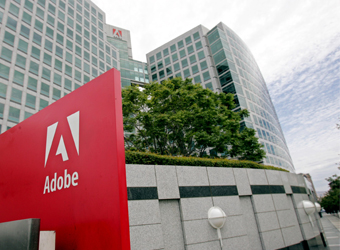Adobe has unveiled on Monday a number of new tech advancements that it hopes will merge the experience of walking into a physical bank branch with that of browsing its website or app.
One feature, “fluid experiences,” uses artificial intelligence (AI) to automatically reformat content on a bank’s website or app to fit a screen inside the bank.
Another, “location-based personalization,” utilizes data based on a customer’s geographical location to trigger a notification on a user’s smartphone once they enter a bank. This could contain instructions about how to access new services, Adobe said.
“Banks are grappling with the future of physical branch locations,” Christopher Young, director of financial services industry strategy at Adobe, said in an announcement Monday.
“They need to re-imagine the in-store experience so that it complements the digital one, and is not destroyed by it.”
Adobe has a number of banking clients, including U.S. giants Citi and U.S. Bank, European lenders HSBC, BNP Paribas, Barclays, Royal Bank of Scotland and UBS, and Australia’s National Australia Bank.
Decline in physical branch visits
The software giant claims that physical bank branch visits have declined and “customers are relying on digital devices more than ever before.”
“If you ask the average consumer how many times they’ve entered a bank in the past year, that number can probably be counted on one hand,” Adobe’s Young said.
“Most major tasks can be accomplished online and on smartphones — or via an ATM that doesn’t require stepping foot inside the branch.”
Young told CNBC that even ATMs are seeing a decline in engagement as the introduction of digital kiosks — “much larger, giant tablets that can do more things” — removes the need for cash machines.
“Things that (automated) tellers could only do, now they’re being replaced with these high-powered kiosks,” he said in an interview.
Web traffic grew 8 percent for large banking and investment firms between the second quarters of 2016 and 2017, according to data from the Adobe Analytics Cloud. Meanwhile, smartphone visits grew 80 percent between 2015 and 2017.
Source: CNBC



